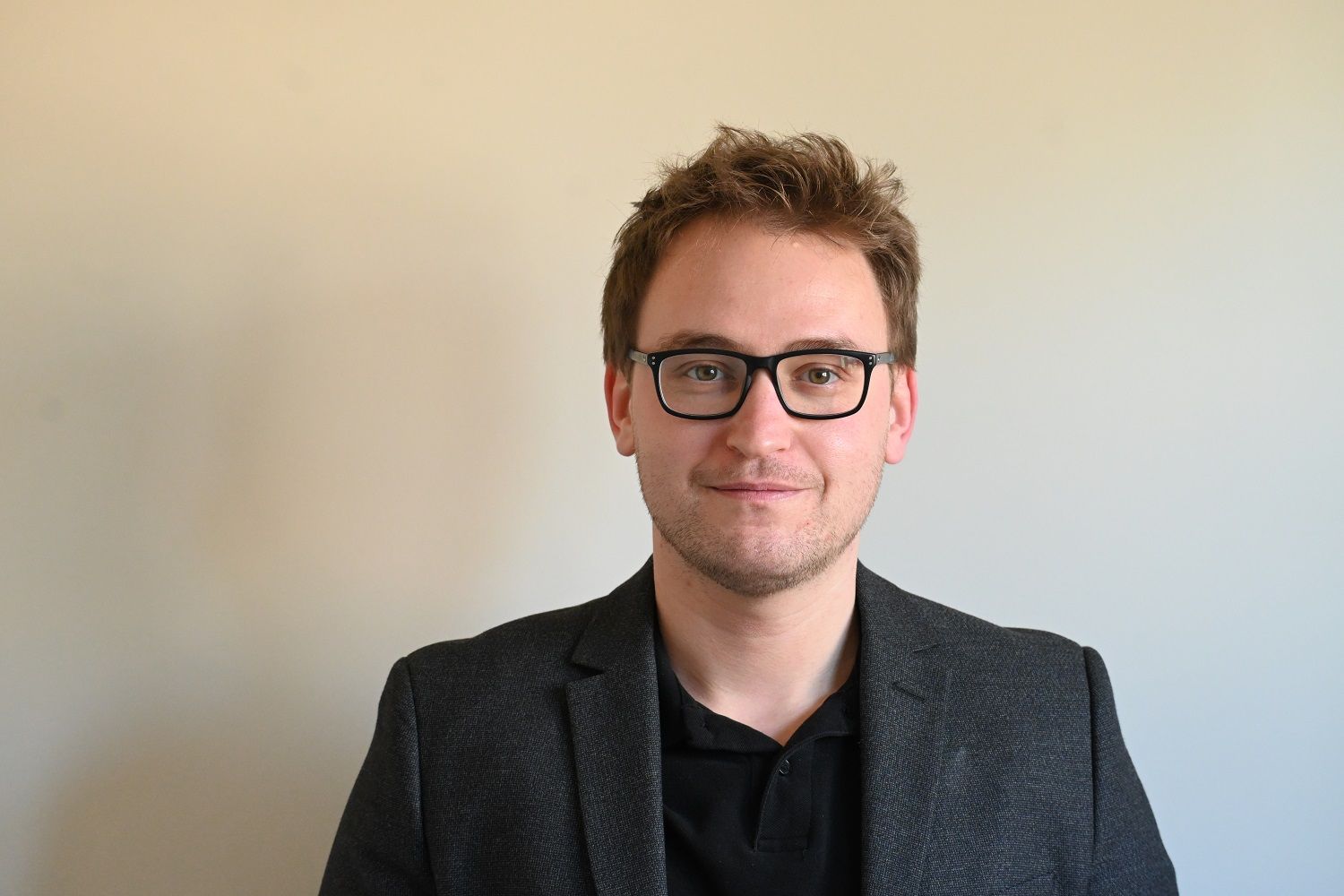Stefaan, woher kommt dein Interesse an Gebäudeplanung?
Mir gefallen Gebäude im Allgemeinen: Wenn ich in eine Kirche gehe, lasse ich den Blick um mich herum und zur Decke schweifen, anstatt zum Priester. Das Ganze fing bei einem Projekt in der Mittelschule an: Damals haben wir die Wände an einem historischen Gebäude in der Stadt Sint-Niklaas mit feinen Fragmenten gestaltet. Es hat mir echt Spaß gemacht, die verschlungenen Ornamente in Gips zu gießen. Das Projekt hatte sogar Ähnlichkeit mit meiner heutigen Arbeit: Wir haben selbst Zeichnungen und Berechnungen für Teile einer provisorischen Konstruktion erstellt, die wir später mit Ziegeln und Mörtel umgesetzt haben – und zur Planung im Vorfeld sogar Computer und digitale Zeichnungen benutzt. Ich fand es toll, weil ich neben meinem Interesse für die Technologie hinter modernen Gebäuden auch eine Vorliebe für historische Gebäude habe. Für meinen Lernprozess war es von grundlegender Bedeutung, die praktische und die theoretische Seite miteinander zu verbinden. Es ist interessant zu sehen, wie sich das Bauen verändert hat: Wenn man den Bau von Notre Dame mit einem modernen Gebäude vergleicht, gibt es große Unterschiede in Bezug auf die Ästhetik, das Verfahren selbst und die Sicherheit. Es ist eine unglaublich erfüllende Erfahrung, diesen Wandel gemeinsam mit unseren Kunden voranzutreiben.
Warum arbeitest du heute bei Xella und nicht als Restaurateur?
Wir bieten bei Xella ein revolutionäres Produkt an. Ich würde sagen, dass es genau das ist, was in unserem modernen Umfeld funktioniert, weil die Sandsteinblöcke sehr schnell verlegt werden können. Die Kunden wünschen sich Effizienz – auch mir war es bei der Renovierung von meinem eigenen Haus wichtig, saubere und umweltfreundliche Baustoffe zu verwenden. Deshalb habe ich für den neuen Anbau Ytong-Blöcke von Xella verwendet. Und dazu kommt, dass das Wissen um die Herstellung von Ornamenten heutzutage nicht wirklich gefragt ist – es ist kostenintensiv und nicht sehr effizient. Aber ich habe im Studium ein paar Extratage darauf verwendet, zum Beispiel zur Restaurierung von alten Betonmaterialien.
Was gefällt dir an deinem Job als BIM-Manager?
Was mir an der Arbeit wirklich gefällt, ist, mich mit der Geometrie und den Informationen darin zu beschäftigen, über Probleme nachzudenken, sie möglichst zu lösen und eine gute Beziehung zu unseren Kunden zu pflegen. Wir sehen uns als Dienstleister – und Dienstleistung ist kein Wort, das wir leichtfertig benutzen. Zu Beginn eines Projekts verpflichten wir uns, passende digitale Dienstleistungen anzubieten. Das ist herausfordernd, denn sie müssen zu den fortschreitenden Technologien passen, die unsere belgischen Vertragspartner nutzen. Ich finde, eine herzliche Beziehung entsteht mit Zufriedenheit – und das öffnet Türen zu einer konstruktiven und wohlwollenden Partnerschaft.
Diese Haltung kommt auch aus unserem kontinuierlich wachsenden Team: Jeder hier hat einen großartigen Sinn für Humor und eine einzigartige Persönlichkeit. Bei uns herrscht wirklich ein großer Zusammenhalt, der ein starkes Fundament für unsere Zukunft bildet. Denn die Etablierung von BIM ist unausweichlich geworden. Als eine unsere obersten Prioritäten bereiten wir uns darauf vor, dass in absehbarer Zeit noch mehr BIM-Projekte auf uns zukommen.
Welche Nachhaltigkeits-Ziele verfolgst du in deiner täglichen Arbeit?
Wir können zum Beispiel Fahrräder für den Arbeitsweg leasen, was ich gerne nutze: Fast immer fahre ich mit dem Fahrrad ins Büro. Das hält mich gesund und hilft mir, ein wenig umweltfreundlicher zu leben. Denn die Vorstellung, dass kleine Anstrengungen keinen Unterschied machen, um die globale Erwärmung aufzuhalten, führt zu Nachlässigkeit und letztlich dazu, dass wir keine Verantwortung für unser Handeln übernehmen. Die vermehrte Nutzung von Cloud-Diensten und digitalen Arbeitsmitteln in unserem Büro bestärkt mich auch darin, so wenig wie möglich zu drucken. Damit werden die digitalen Versionen unserer Produkte erst in physische Materialien umgewandelt, wenn der Designprozess abgeschlossen ist und sie in den Fabriken hergestellt werden.
Darüber hinaus unterstützen wir bei größeren Lieferungen den Einsatz von Booten. Es ist eine umweltfreundlichere Alternative zu herkömmlichen Transportmethoden.
Welchen Beitrag leistet die Bevorzugung des Schiffstransports für die Umwelt?
Es wird weniger CO2 verbraucht als bei herkömmlichen Lastwagen, vor allem weil unser Werk an einem der größeren Flüsse Belgiens liegt. Dorthin importieren wir die Materialien für die Herstellung der Produkte und von dort aus liefern wir sie aus. Der Einsatz weiterer Schiffe verlangt die Notwendigkeit, vorauszuberechnen, was wir mit diesen Schiffen liefern müssen. Auch bei diesen Vorberechnungen spielen BIM-Modelle eine wichtige Rolle. Und es entlastet auch unsere Autobahnen. (lesen Sie auch)
Erfreulicherweise gab es in letzter Zeit einen Anstieg von Projekten, bei denen die Materialien auf dem Wasserweg geliefert wurden, und wir bemühen uns aktiv darum, das auch in Zukunft fortzusetzen.
Als letzte Frage: Welche Rolle spielt Sicherheit für dich?
Eine äußerst wichtige. Jeder hat Angehörige, um die er sich sorgt. Wie ich eingangs erwähnt habe, ist das Bauwesen über die Jahre viel sicherer geworden, aber wir sollten uns nicht auf dem Erreichten ausruhen. Vor ein paar Jahren war ich in einem anderen Zusammenhang auf einer Baustelle. Ich habe gesehen, wie die Bauarbeiter dort zum Abstellen unserer großformatigen Sandsteinblöcke den Turmdrehkran anstatt dem Minikran benutzt haben – sie haben versucht, Zeit zu sparen und haben den Minikran deshalb nicht von der anderen Gebäudeseite herübergeholt. Es war sehr windig, deshalb schwankten die Blöcke. Ich habe gesehen, wie sich jemand festhielt, während er Anweisungen gab – und gerade noch rechtzeitig absprang, um einen schweren Unfall zu vermeiden! Das war der Moment, in dem mir klar wurde, dass die Herangehensweise an unsere Arbeit Auswirkungen auf die Kontinuität und Sicherheit vor Ort hat. Jeder Unfall ist vermeidbar. Sicherheit sollte immer Priorität vor Eile haben.
